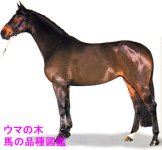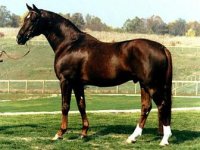♘امیرحسین♞
♘ مدیریت انجمن اسب ایران ♞
The Westphalian, like all German Warmbloods, is named after the area in Germany from which it originates (the Trakehner being the only exception). The horse is, today, an important show horse with the Olympic and National Riding Schools being located in Westphalia. Closely related to the Hanoverian, the Westphalian is slightly larger due to its ancestral work on farms and in the army.
History
The Westphalian's background is basically a refined version of the heavy farm horses used in the area. Hanoverian blood was then introduced, resulting in a horse of great conformation and show ability. Also introduced to the Westphalian was the Thoroughbred and the Arabian, which gave the breed that little extra needed in a good competition horse. As one of today's leading competition breeds, the Westphalian must pass strict and rigorous tests before they are allowed to breed. Conformation, character, pedigree, and riding are all tested over a period of four and a half years before a horse is selected for breeding.
Today's horses are commonly seen in the dressage and show jumping arenas.
Breed Characteristics
As mentioned above, the Westphalian is very similar to its neighbour, the Hanoverian, but is slightly larger. It is usually between 16 and 17 hands high, measured from the withers. It has an attractive head that shows a slightly concave profile, the body is muscular and the croup flat.
History
The Westphalian's background is basically a refined version of the heavy farm horses used in the area. Hanoverian blood was then introduced, resulting in a horse of great conformation and show ability. Also introduced to the Westphalian was the Thoroughbred and the Arabian, which gave the breed that little extra needed in a good competition horse. As one of today's leading competition breeds, the Westphalian must pass strict and rigorous tests before they are allowed to breed. Conformation, character, pedigree, and riding are all tested over a period of four and a half years before a horse is selected for breeding.
Today's horses are commonly seen in the dressage and show jumping arenas.
Breed Characteristics
As mentioned above, the Westphalian is very similar to its neighbour, the Hanoverian, but is slightly larger. It is usually between 16 and 17 hands high, measured from the withers. It has an attractive head that shows a slightly concave profile, the body is muscular and the croup flat.


